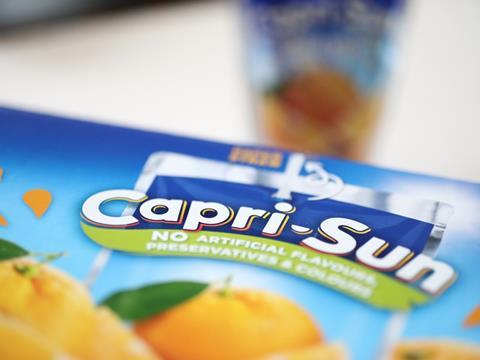
Last week, Capri Sun sparked immense controversy by calling on the European Commission to rethink its ban on plastic straws. It argues that paper straws are “less functional” than plastic ones while also complicating the recycling process. Others, however, say that plastic straws are a potent symbol of the packaging waste crisis. Tim Sykes, Packaging Europe’s brand director, takes a closer look.
This content was originally sent to Packaging Europe members in The Bulletin – a weekly newsletter with articles like this, as well as lots more original content. To receive a brand-new edition of The Bulletin every week, plus an exclusive range of reports, briefings and events, click here.
Since 2021, Capri Sun has distributed paper straws with its juice pouches. These were reinforced with 42% more vertical compression resistance, 36% more bending force resistance, and 18% more strength against compression force as recently as January 2024.
Now, in a U-turn that has proven unpopular, the brand describes the new straws as “less functional” and “not always practical” – and it is petitioning the European Commission for permission to bring back the original plastic straws, despite their prohibition under the Single-Use Plastics Directive.
The idea is to spare consumers the thought and effort required to separate pieces of the pack at end-of-life. With the body of the pouch transitioning into mono-polypropylene in March, bringing the straw into the fold would, theoretically, make the whole packet disposable in the same recycling bin.
One might assume the response would be positive. Consumers have long complained about strange flavours when drinking through paper straws, as well as their sogginess when submerged in a drink for too long.
So, too, could manufacturers benefit from reduced production costs, energy and water consumption – and a study has even identified higher traces of PFAS in paper straws than in other materials, risking impacts on human health.
Yet the outcry against a return to plastic is almost universal. Critics have taken to LinkedIn to argue that the tiny Capri Sun straws can fall through sieves or enter fine reject fractions at recycling plants; that their iconic orange colour compromises their recyclability altogether; and that, on a wider scale, recycling isn’t a silver bullet to solve plastic pollution, nor is a mono-material pack helpful if the necessary infrastructure is lacking. Some consider the return to plastic a greenwashing tactic and condemn the use of the Change.org platform for corporate gain.
That leaves Capri Sun in a tough spot, because rumours of the drink abandoning its straw and pouch in favour of a bottle met its own backlash – consumers seem to like the novelty of poking a hole and sucking out the juice. There appears to be no solution that will please everyone, and the brand must try to balance its USP and the public’s nostalgia with increasing demand for convenient recyclability.
Naturally, I don’t have an unbiased answer. I can say that navigating this minefield of regulations and reactions is difficult, and I at least commend Capri Sun for listening to feedback and trying something new. Perhaps now more listening is in order to find a happy medium.
If you liked this story, you might also enjoy:
How are the top brands progressing on packaging sustainability?
Sustainable Innovation Report 2024: Current trends and future priorities
Reuse vs. single use – which is better for the environment?
The ultimate guide to global plastic sustainability regulation





















No comments yet